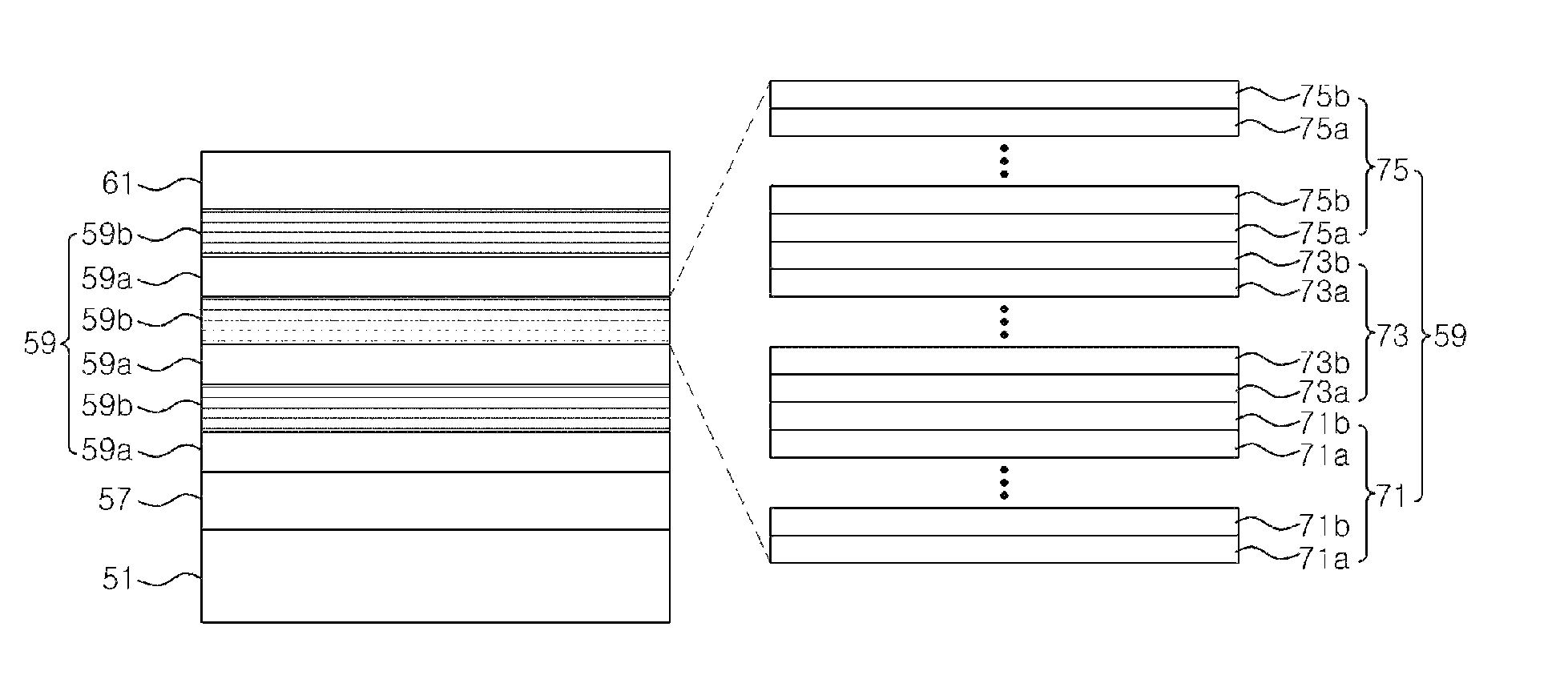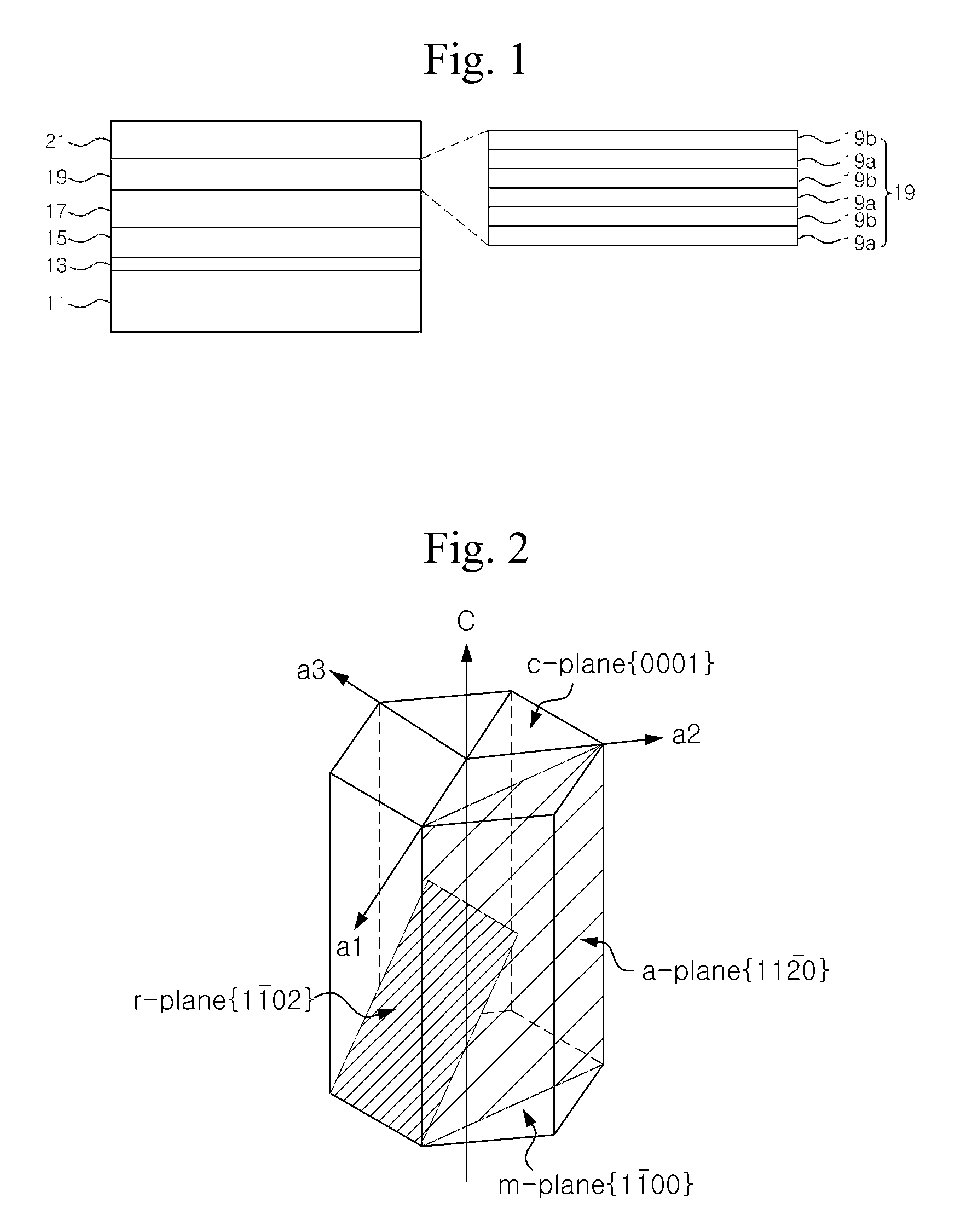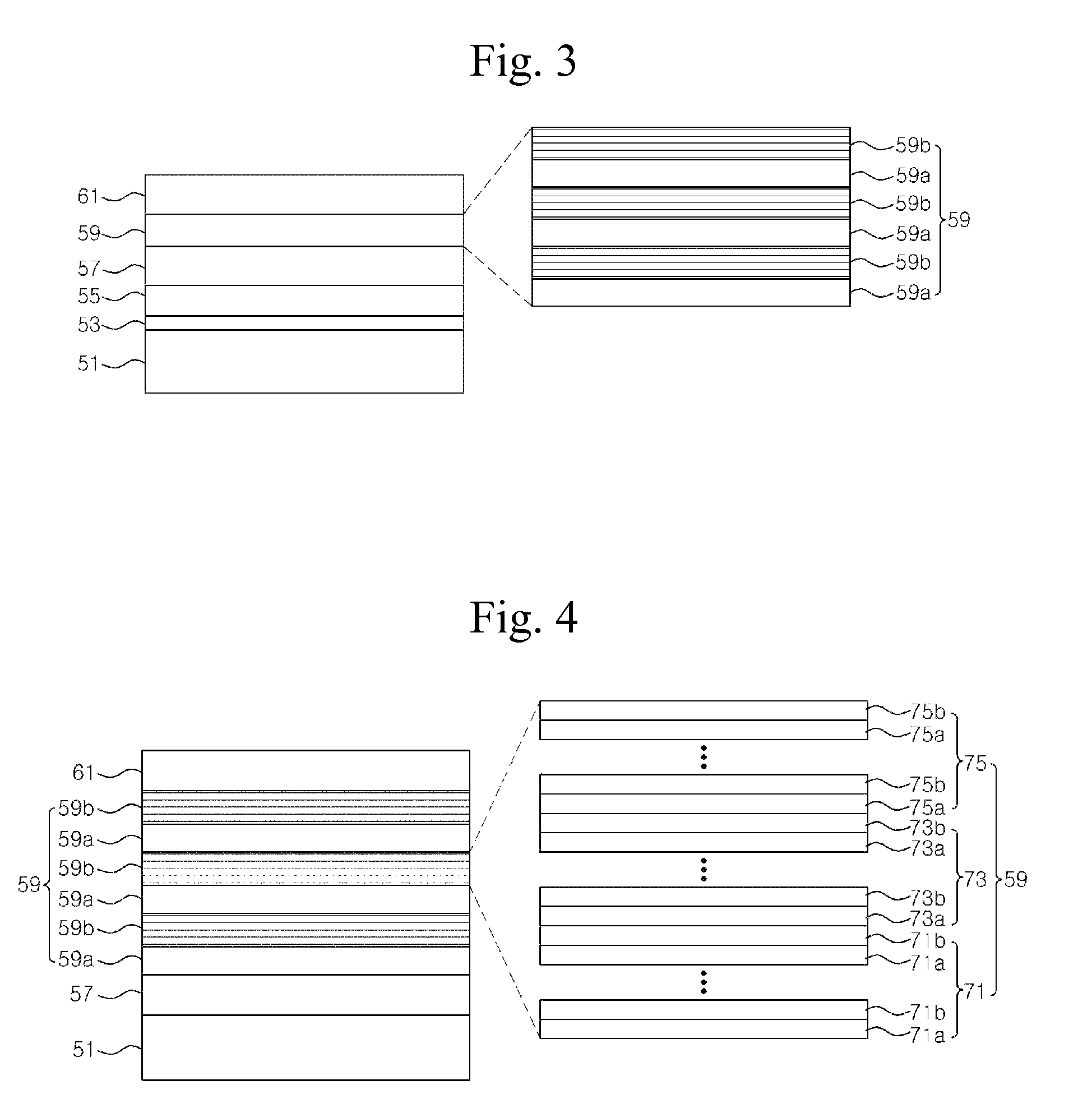Light emitting diode with improved structure
a light-emitting diode and improved structure technology, applied in the field of non-polar light-emitting diodes, can solve the problems of pin holes, cracks or warpages in the semiconductor layer, dislocation, etc., and achieve the effect of enhancing the recombination efficiency of electrons and holes and minimizing the generation of crystal defects
- Summary
- Abstract
- Description
- Claims
- Application Information
AI Technical Summary
Benefits of technology
Problems solved by technology
Method used
Image
Examples
Embodiment Construction
[0033]Hereinafter, embodiments of the present invention will be described in detail with reference to the accompanying drawings. The following embodiments are provided only for illustrative purposes so that those skilled in the art can fully understand the spirit of the present invention. Therefore, the present invention is not limited to the following embodiments but may be implemented in other forms. In the drawings, the widths, lengths, thicknesses and the like of elements may be exaggerated for convenience of illustration. Like reference numerals indicate like elements throughout the specification and drawings.
[0034]FIG. 3 is a sectional view illustrating an LED according to an embodiment of the present invention.
[0035]Referring to FIG. 3, an N-type compound semiconductor layer 57 is positioned on top of a substrate 51. Also, a buffer layer may be interposed between the substrate 51 and the N-type semiconductor layer 57, and the buffer layer may include a low-temperature buffer ...
PUM
 Login to View More
Login to View More Abstract
Description
Claims
Application Information
 Login to View More
Login to View More - R&D
- Intellectual Property
- Life Sciences
- Materials
- Tech Scout
- Unparalleled Data Quality
- Higher Quality Content
- 60% Fewer Hallucinations
Browse by: Latest US Patents, China's latest patents, Technical Efficacy Thesaurus, Application Domain, Technology Topic, Popular Technical Reports.
© 2025 PatSnap. All rights reserved.Legal|Privacy policy|Modern Slavery Act Transparency Statement|Sitemap|About US| Contact US: help@patsnap.com



